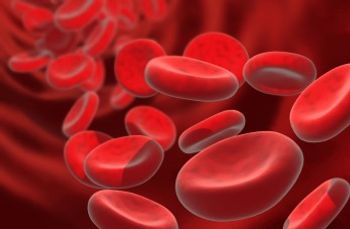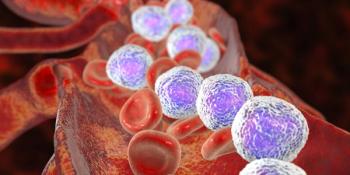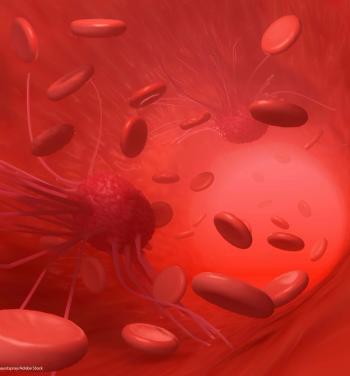
Oncology NEWS International
- Oncology NEWS International Vol 19 No 10
- Volume 19
- Issue 10
Survivors of Hodgkin's lymphoma undergo multiple followup CT scans without deriving benefit
Canadian researchers also find that patients are not having recommended cancer screening studies done on a regular basis.
One of the first population-based studies to evaluate the long-term follow-up care of Hodgkin's lymphoma survivors has suggested that routine CT may be overused as part of follow-up. Moreover, scanning may not be the most efficient way to detect treatable recurrences, according to Canadian researchers.
"Oncologists need to carefully consider whether regular annual CT screening for Hodgkin's lymphoma survivors, who have a low risk of relapse, is really necessary beyond two years after completion of treatment," said lead investigator David Hodgson, MD, MPH, a radiation oncologist at Princess Margaret Hospital and a scientist at the Institute for Clinical Evaluative Sciences in Toronto.
For this research, 2,071 one-year survivors (mean age, 35.4 years) of Hodgkin's lymphoma, diagnosed between 1992 and 2000, were identified from the Ontario Cancer Registry, and records of their healthcare for two to 15 years after diagnosis, accessed through the Ontario Health Insurance Plan and other databases, were assessed. The most common treatments that this segment of patients underwent were chemotherapy alone (45%) and combined modality therapy (37%).
Most patients had visits with a primary care provider and an oncologist in years two through five after the Hodgkin's lymphoma diagnosis. Sixty-six percent of the patients had at least one CT scan in their second year after diagnosis; 31.8% had at least one follow- up CT scan five years after diagnosis.
However, only 125 patients received chemotherapy within six months of a CT scan during years two through five. Many patients continued to receive annual CT scans long after their diagnosis and treatment: 44.4% of survivors had at least one CT scan six to nine years after their diagnosis, and 32.7% had one 10 to 15 years later (Cancer 116:3417-3425, 2010).
These routine CT scans often did not lead to any salvage chemotherapy, suggesting that they are not detecting any relapse of cancer, Dr. Hodgson said.
"Most of these patients have a very good prognosis, and yet they're getting a lot of CT scans and additional exposures to radiation," Dr. Hodgson said. "It's a good time to think about whether these tests are providing any added value."
Other imaging studies-MRI, chest xray, ultrasound-were used less frequently, although the authors noted that as many as 10% of the patients had gallium-enhanced imaging as far as five years after the initial diagnosis.
"Our study also suggests there may be opportunities to improve communication between specialist teams and primary care providers about appropriate follow-up care, including the value of appropriate screening tests for other cancers," Hodgson said.
Too many CT scans; not enough screening
Among the Hodgkin's lymphoma survivors who reached the age for routine screening, Dr. Hodgson's group reported that during years two through 15, 62.5% of their records showed no evidence of the patient having undergone colorectal cancer screening, 32.3% had no evidence of breast cancer screening, and 19.9% had no evidence of cervical cancer screening.
Young female Hodgkin's lymphoma survivors are at an elevated risk for breast cancer if they received mediastinal radiotherapy, and these patients still did not follow recommended screening guidelines. In this study, 87.1% of the 526 women eligible for Hodgkin's lymphoma-specific early screening did not receive their exams.
"They ought to be getting the same screening tests as anyone else, and many of them are exposed to treatments that would make the risk of getting a second cancer even higher than for the general public. So, arguably, we should be more vigilant about providing routine cancer screenings for these survivors," Dr. Hodgson said.
These female survivors were less likely to receive early breast cancer screening if they were under the care of a primary care physician only vs an oncologist, suggesting that communication between treating oncologists and primary care providers needs to be improved, he said. Oncologists should supply primary care providers with a treatment summary and a list of recommendations for follow- up care to ensure that more survivors undergo appropriate screening, he added.
VANTAGE POINT
Targeted surveillance better suited for assessing secondary outcomes
SMITA BHATIA, MD, MPH
The most interesting and novel finding in this study is that although many patients were followed with CT scans for their primary disease, few recurrences were identifi ed or managed with treatment shortly afterward, said Dr. Bhatia, professor and chair of the department of population sciences at the City of Hope National Medical Center in Duarte, Calif.
"One take-home message of the study is that we shouldn't be doing blanket surveillance, but rather targeted surveillance for patients who are at high risk based on stage and histology at diagnosis," said Dr. Bhatia, who is also the associate director of population research at the City of Hope Comprehensive Cancer Center.
However, Dr. Bhatia cautioned that one limitation of this research was that the study population had a mean age of 35.4 years: Compared with younger Hodgkin's lymphoma patients, survivors older than age 30 do not have a greatly increased risk of breast, colorectal, or cervical cancer than the general population, she noted. As a result, earlier or more frequent screenings may not always be warranted.
"Most of these patients were also diagnosed between 1992 and 2000, and guidelines developed for follow-up of childhood cancer survivors had not been released at that time. Uptake of these screening guidelines has only started to occur recently," she said.
Because the study was carried out in Canada, where insurance coverage and access to care is different than in the U.S., its results may not all apply to this country, Dr. Bhatia said. Nevertheless, "what cuts across all countries is that the frequency of CT scans may need to be revisited for surveillance of primary disease in survivors," she said.
"There should also be effective and open communication between oncologists and primary care practitioners about how patients should be followed for secondary outcomes or late effects," Dr. Bhatia added.
Articles in this issue
about 15 years ago
Needs change, but long-term survivors still require careabout 15 years ago
Zinecard offers cardioprotectionabout 15 years ago
Avastin fails to benefit early-stage colon cancerabout 15 years ago
Childhood cancer haunts survivors in unexpected waysNewsletter
Stay up to date on recent advances in the multidisciplinary approach to cancer.



















































































